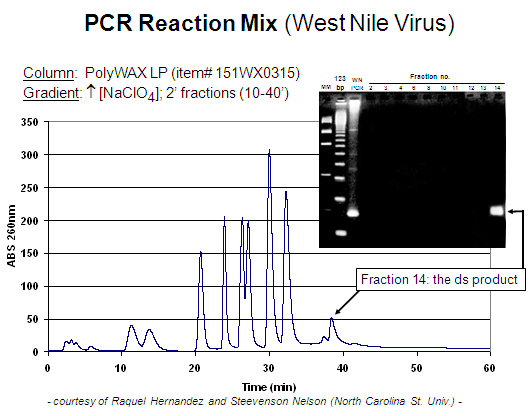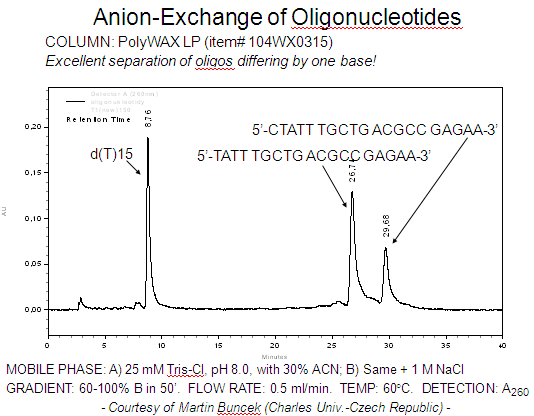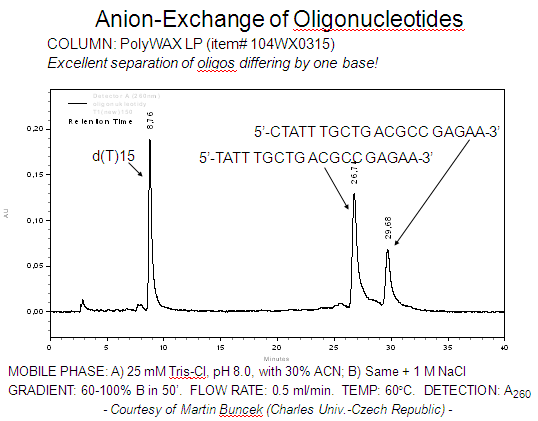Oligonucleotides and PCR Products
Larger oligonucleotides, their analogs, and dsDNA fragments are analyzed and purified by anion-exchange chromatography. Our PolyWAX LP™ material affords excellent results in such applications, especially the 3-µm, 1500-Å version. G-rich nucleic acids cause problems with some separation methods but not with PolyWAX LP™ columns eluted with a NaClO4 gradient.
Order PolyWAX LP™ now.
PCR Reaction Products: Results from Raquel Hernandez’ group (North Carolina St. Univ.) demonstrate that PCR reaction products can be purified on a column of this material much more conveniently than with a PAGE gel and with higher recovery [BELOW]. This is true even of GC-rich products.

Oligonucleotides: The 3-µm version of PolyWAX LP™ affords unusually good resolution of oligonucleotides [BELOW].

Mobile Phase: A) 25mM Tris-Cl, pH 8.0, with 30% ACN, B) Same +1 M NaCl
Gradient: 60-100% B in 50′ Flow Rate: 0.5ml/min Temp: 60° C Detection: A250
Phosphorothioates: These elute in broader peaks than do regular oligonucleotides, since the phosphorus atoms are optically active centers. Thus, phosphorothioates consist of 2n diastereomers (n = # of bases). An example is shown below.

Mobile Phase: A) 25mM Tris, pH 8.0, with 30% ACN, B) Same +1 M NaClO4
Gradient: 0-3′: 0% B; 3-4′: 0-60% B; 4-34′: 60-100% B; 34-38′: 100% B
Flow Rate: 0.5ml/min Temp: Ambient Detection: A260 Sample: 1.7µg
Hydrophilic Interaction Chromatography: This is an alternative to anion-exchange that can be used with volatile solvents. The following example consists of phosphorothioates with the same base sequence as the conventional oligonucleotide above. Peaks are broader, although it is unclear how much of this is due to:
a) The mode used;
b) The diastereomeric composition of phosphorothioates; and
c) The use of a 5-µm column for HILIC instead of 3-µm.
PolyWAX LP™ and PolyHYDROXYETHYL A™ are trademarks of PolyLC Inc. All Rights Reserved.
